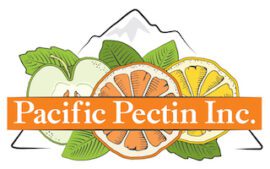Why are my peppers suspended but runny, not gelled?
Why does mold grow quickly on my jelly after being opened and in the refrigerator?
This is usually caused by low sugar content in the jelly. The lowest we recommend using is 40% sugar, 55% fruit. If you want to use less than 40% sugar we recommend our Pacific LM-O Pectin, which contains preservatives that will lengthen shelf life after opening.
Why do I have mold on my jelly?
This problem can be caused by a few different issues:
- The jar lid was not completely sealed. Inspect the lid for a bad glue ring and inspect the glass surface for imperfections.
- The fill temperature was too low. Did you fill at a minimum of 190 degrees F°?
- The container wasn’t sterile. Did you clean your jars and lids thoroughly?
- The sugar content was too low. Sugar is a natural preservative, therefore, if you want to use less than 40% sugar we recommend our Pacific LM-O Pectin, which contains preservatives that will lengthen shelf life after opening.
Why do my light color jams turn dark?
This is generally caused by oxidation. Our Pacific Fruit Freshener will slow this process and keep your jams looking brilliant much longer than average.
Why do sugar crystals form on my jelly?
This problem is caused by either cooking too long, or having too much sugar in the recipe (brix are too high). Solution: shorten cook time or take some sugar out of the recipe. We suggest making small changes. Most often it will not require much change to bring the recipe back into balance. Click on our Technical page and read the Recipe Building section for some general rules about the sugar content for recipes.
Why does my jelly “weep?”
Weeping jelly is most often caused by too much acid in the fruit or recipe in general. A low pH gel is very brittle and will squeeze water out, producing a liquid layer between the jelly and the glass. Solution: raise the pH. This can be accomplished by either omitting or reducing acidic ingredients or adding a buffer like Sodium Citrate. In some cases, switching from our Pacific Pectin Mix to our Pacific Pectin Mix no Acid will solve the problem as well.
Why does my jelly or jam not set?
Is the recipe you used a proven recipe? If so, than ask yourself, did I follow the instructions correctly? Most failures with proven recipes occur when we deviate from the cooking instructions or the amounts called for in the recipe. If the recipe is not a proven one, I would suggest either doing some research on your recipe or find a proven recipe that will work. Click on our Technical page and read the Recipe Building section for some general rules about building jam and jelly recipes.
Can I use Citric Acid in place of lemon juice to adjust my pH?
Yes. A 50/50 solution of citric acid and water is 9 times stronger in acid than lemon juice. You simply take the amount of lemon juice required in your recipe and divide by 9.
½ tsp citric acid + ½ tsp water = 4 TB lemon juice.
Can I use a liquid pectin in a dry pectin recipe or vice versa?
No. Either recipe would need to be altered to work with either pectin.
Can I double my recipe?
Yes you can, but keep in mind when doubling your recipe the cook time does not double along with the ingredients. You will however need to cook longer than what the original recipe calls for. For example, if your recipe calls for a one minute hard boil two minutes for a double batch would be too long. A good rule of thumb is to increase the cook time by 50%. So in this example you would increase the cook time 1 minute 30 seconds. This is not a guarantee it will work, but will give you a much better chance of success.
How much pectin should I use?
Our Pacific Pectin Mix and Pacific Pectin Mix no Acid requires a minimum of 2% pectin content of the total batch weight. Our Pacific LM-3 requires a minimum of 3% and our LM-O requires a minimum of 5% . FYI 1/3 cup dry measure equals 2 oz. Pacific Pectin Mix/No Acid and Pacific LM-3. 1 cup dry measure equals 5 oz. Pacific LM-O.
What is the shelf life of pectin?
Pectin starts to weaken immediately after extraction from citrus peel. It will take approximately 18 months to 2 years before the end user will start to notice weaker gels.
How should pectin be stored?
Pectin should be stored in a cool, dry environment, like a lower shelf in your pantry.

